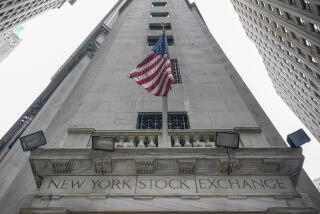Greenspan Notes Banking Risks, Urges High Capital
- Share via
WASHINGTON — Federal Reserve Chairman Alan Greenspan said today that the level of risk in the banking industry is higher now than in the recent past and urged bankers to maintain the capital ratios of institutions in their highly leveraged industry.
“No one can know what problems lie ahead. Nonetheless, banks with strong capital positions are more likely to survive periods of uncertainty than are those with weak ratios,” Greenspan said in a speech to the annual meeting of the American Bankers Assn.
Greenspan said current capital levels are at the low end of their historical range despite recent efforts by bankers to improve the ratio of assets to capital.
Although most of the nation’s 13,000 commercial banks already exceed existing minimum capital standards, “it is important to keep in mind that, in both relative and absolute terms, banking is a highly leveraged industry,” Greenspan said.
Current capital requirements should not impede banking competitiveness, and by maintaining adequate capital levels banks will boost the public’s confidence, Greenspan said.
“The fact that more than 700 banks have failed in the past five years alone demonstrates that banking is far from risk free,” he said.
All commercial banks by 1992 must have a capital-to-assets ratio of 8% under guidelines established by the Federal Reserve, the office of the comptroller of the currency and the Federal Deposit Insurance Corp.
Moreover, the savings and loan bailout bill requires thrifts to have a 6% capital-to-assets ratio and a 3% ratio of core capital to assets.
The bid to boost banking capital has sent several financial institutions scrambling for cash. Greenspan said he does not believe that the capital requirements are too high by historical standards. Current capital ratios are less than one-half the level of 50 years ago, he said.
More to Read
Sign up for Essential California
The most important California stories and recommendations in your inbox every morning.
You may occasionally receive promotional content from the Los Angeles Times.













